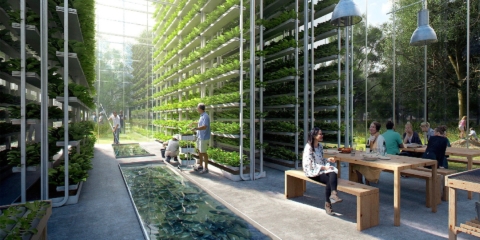Would you like to get notifications from Christian?
What happened? It’s no secret that we need to find alternative energy sources as the world moves away from fossil fuels. Microprocessors are becoming increasingly common in small devices, and now researchers have found a way to power them using seaweed. Algae produce a current when they photosynthesize, which can be captured and used to power a microprocessor or other small device. This provides an interesting new possibility for powering small electronics without using traditional methods like batteries or solar power.
Why is this important? The researchers point out that as the world’s population of tiny gadgets approaches a trillion by 2035, demand for lithium will be three times greater than supply, owing to environmental damage caused by batteries manufactured from hazardous materials.
What will be the impact on human beings and our planet? As we move toward a more digital world and are surrounded by small devices (IoT), it’s important to find renewable and sustainable energy sources to power our devices. Seaweed is a common and abundant type of algae, making it a promising candidate for powering small electronics. This could have a major impact on the way we power our devices in the future, and help reduce our reliance on fossil fuels.
This is an exciting new development in the world of alternative energy, and it will be interesting to see how it progresses. Seaweed-powered electronics are still in the early stages of research, but if successful, they could have a major impact on the way we power our devices.
Do you think Algae Could Provide Power to Small Devices? What applications of this technology are you most excited about? Let us know
Author: Christian Kromme
First Appeared On: Disruptive Inspiration Daily
Christian is a futurist and trendwatcher who speaks about the impact of exponential technologies like AI on organizations, people, and talents. Christian tailors his presentations to your audience’s specific industries and needs.




Embracing the advancements of technology and AI can enhance our humanity. We can focus on developing our unique talents and skills by automating mundane tasks and freeing up our time. As humans, we can adapt and learn, allowing us to evolve and stay relevant in a rapidly changing world constantly.


Organizations will need to be more fluid, dynamic, and adaptable: the ability to change and adjust in response to new situations and environments. We are on the cusp of a new era of organizations, ones that are more fluid and agile and which behave like swarms we see in nature.




In the future, 3D printing and generative design will allow for products to be designed in a more decentralized manner, and production will take place closer to the customer and fully on-demand. 3D printing technology will also allow for more customization and personalization of products.


The agricultural industry is ripe for disruption. Robotics, AI, and IoT are all technologies that have the potential to radically transform the way we grow food. In combination with vertical farming, these technologies could increase the efficiency and quality of agricultural products.

A human-centered society is one that puts people first and where technology is used to unite and empower people. It is a society that values biological life and dignity above all else. It is a society that recognizes the importance of human relationships and works to strengthen them. In a human-centered society, all members of the community are valued and treated with respect.


The future of healthcare is here. New technologies like AI, IoT, big data, and smart sensors make it possible to become the CEO of your own health. Imagine that your phone can listen to your voice and AI algorithms can detect small nuances in the tone of your voice that indicate specific diseases.
